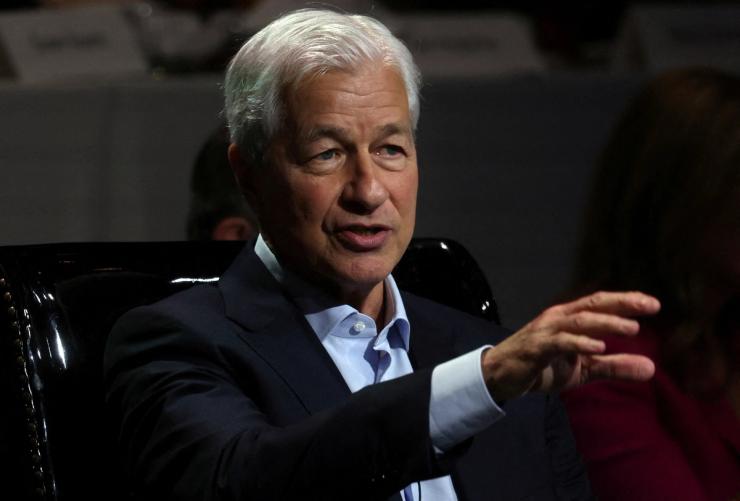Liz’s view
With the billions flying into AI startups, data centers, and chips, the question we’ve been asking, repeatedly at Semafor, is: Who’s paying for all of this?
AI labs are quick to tout supplier and investor deals, no matter how futuristic or fuzzy. But where are the customer brags? News that OpenAI had signed nine-figure deals with Delt or Citadel or Eli Lilly would do as much for the AI ecosystem as multibillion-dollar funding rounds and gigawatt purchases. The quote from the corporate community has suggested, uncomfortably, that companies either aren’t spending much or aren’t seeing much in the way of returns.
Enter Jamie Dimon yesterday with a rare and welcome receipt: JPMorgan is spending $2 billion a year on AI services that are paying for themselves in cost savings. He was vague about the details, but said about half of JPMorgan’s 317,000 employees use the bank’s internal large language model each week to scrape research reports, write code, and generate ideas.
Of course, the real economic promise of AI for JPMorgan and its ilk isn’t replacing app developers or risk managers. It’s using AI to build new products and bring them to new markets — to create a bigger pie, not just a cheaper one.
Mock my prediction, as some of you gently did, that live-translating AirPods could crack open global commerce. But JPMorgan sending its top bankers to São Paulo whether or not they speak Portuguese is a small example of AI growing markets, not just cutting costs. Deeper analysis could spin up better ETFs. Predictive tax planning — hard to do now without endless data collection — could attract new customers to wealth management.
I’d like to hear more of this from Dimon and from other CEOs who’ve been conspicuously quiet during this era of AI hype. Until there’s a clearer picture of who’s actually buying AI products, the doubts will keep piling up about the massive sums being spent to build them.
In this article:
Room for Disagreement
Huge AI spending is worth it even if the corporate customers don’t show up, Axios’ Scott Rosenberg argues. “Even if there’s a big AI bust, a company that built a giant data center for AI still has a giant data center,” which is why “no one in Silicon Valley is terribly worried about the risk of overbuilding.” It’s better to overspend, the thinking goes, especially when the money being invested is coming from proven cash cows, rather than speculative borrowing or share issuances.
Notable
- The risk of underinvesting in AI “in no way answers the question of how these companies are going to earn a return on $230 billion worth of capital spending in 2024, and likely even higher spending in 2025 and beyond,” Alliance Bernstein wrote last year as the boom was getting going.
- OpenAI and Anthropic unsurprisingly top the list of AI apps that startups are paying for, compiled by a16z and fintech Mercury, but it gets obscure fast.



